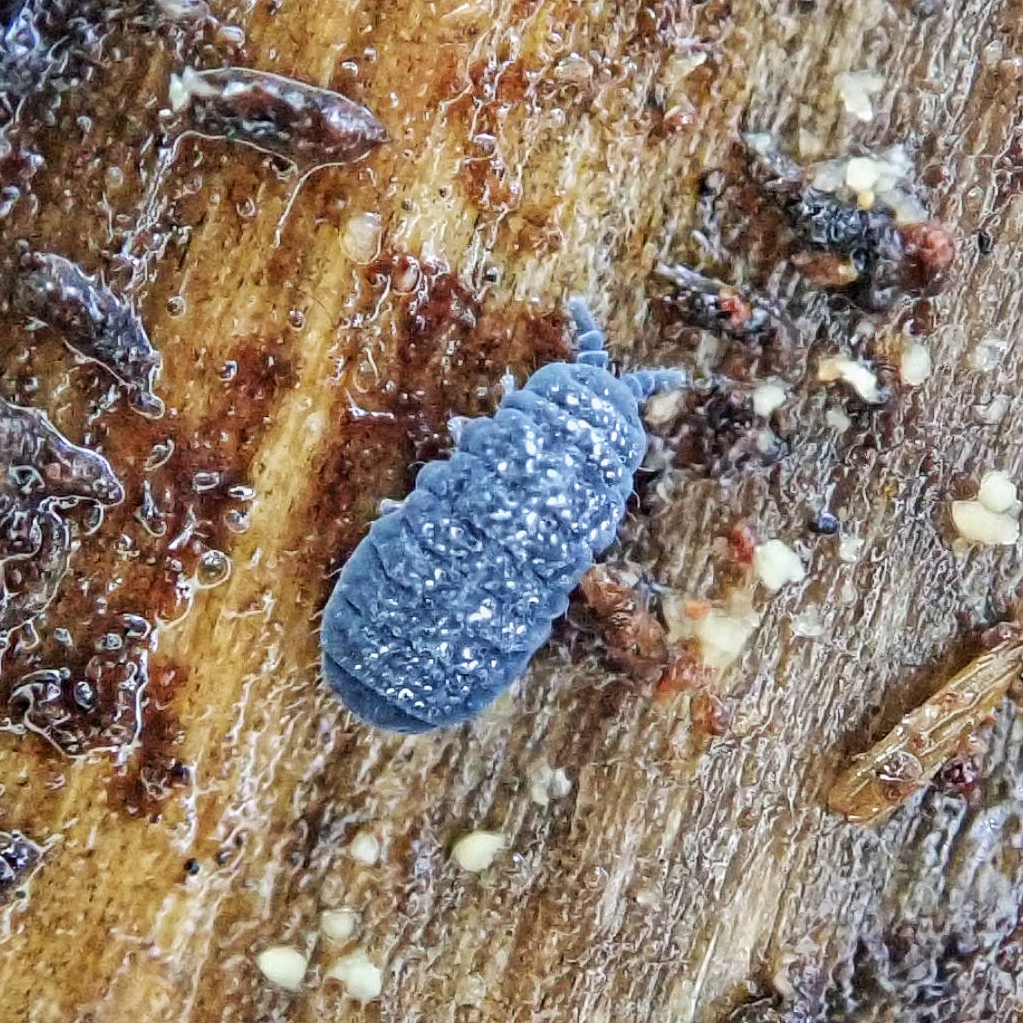
I can find almost no natural history information about this species (or even the genus) of springtails (class Collembola) in the family Neanuridae (order Poduromorpha). Poduromorphs tend to have short legs, and a relatively plump, long oval body. What I found out from Frans Janssens, one of the proprietors at Collembola.org and the resident Collembola expert on BugGuide, when I submitted this specimen, is that members of the family Neanuridae can be distinguished from those in Hypogastruridae (which contains the species I thought this was, the so-called snow flea Hypogastrura nivicola, which is also a bright, blue grey springtail) by the complete absence of anal spines in the former. What confused me is that the anal spines are extremely atrophied in H. nivicola, but they are still there.
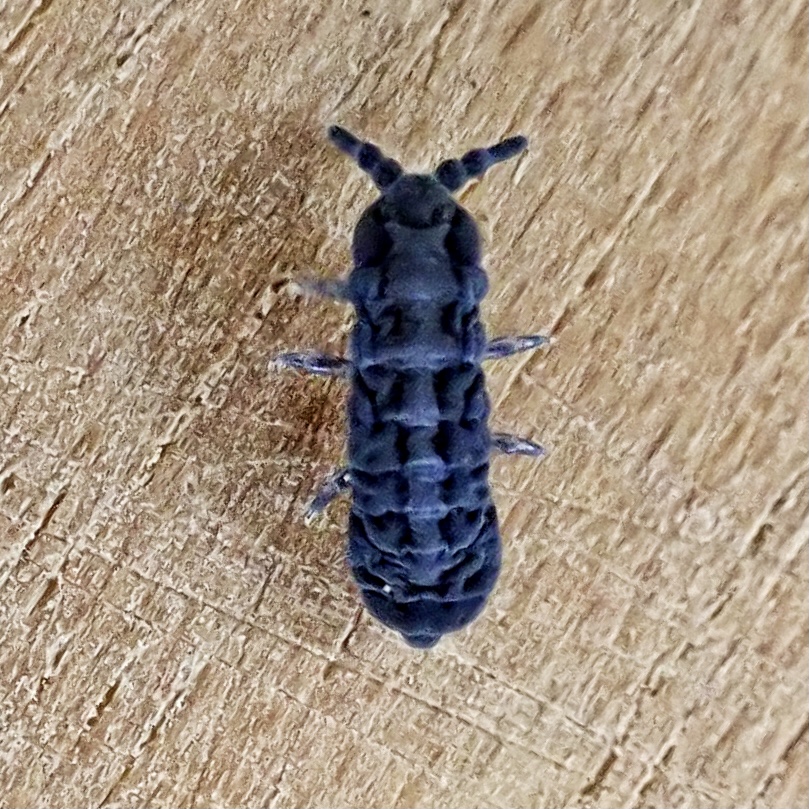
I can’t access a key to this genus (if any of you good folks have access to a key to North American Pseudachorutes I would love to see it!), and I can’t even find photos for most species, although I looked! But fortunately I took clear enough photos that Frans Janssens, took the time to ascertain that this is Pseudachorutes complexus, which is the first record of this species on BugGuide, although it is certainly not a rare species. It’s really just a matter of taking the time to look, and documenting what you find. And when you look closely at springtails they really are beautiful and interesting bugs!
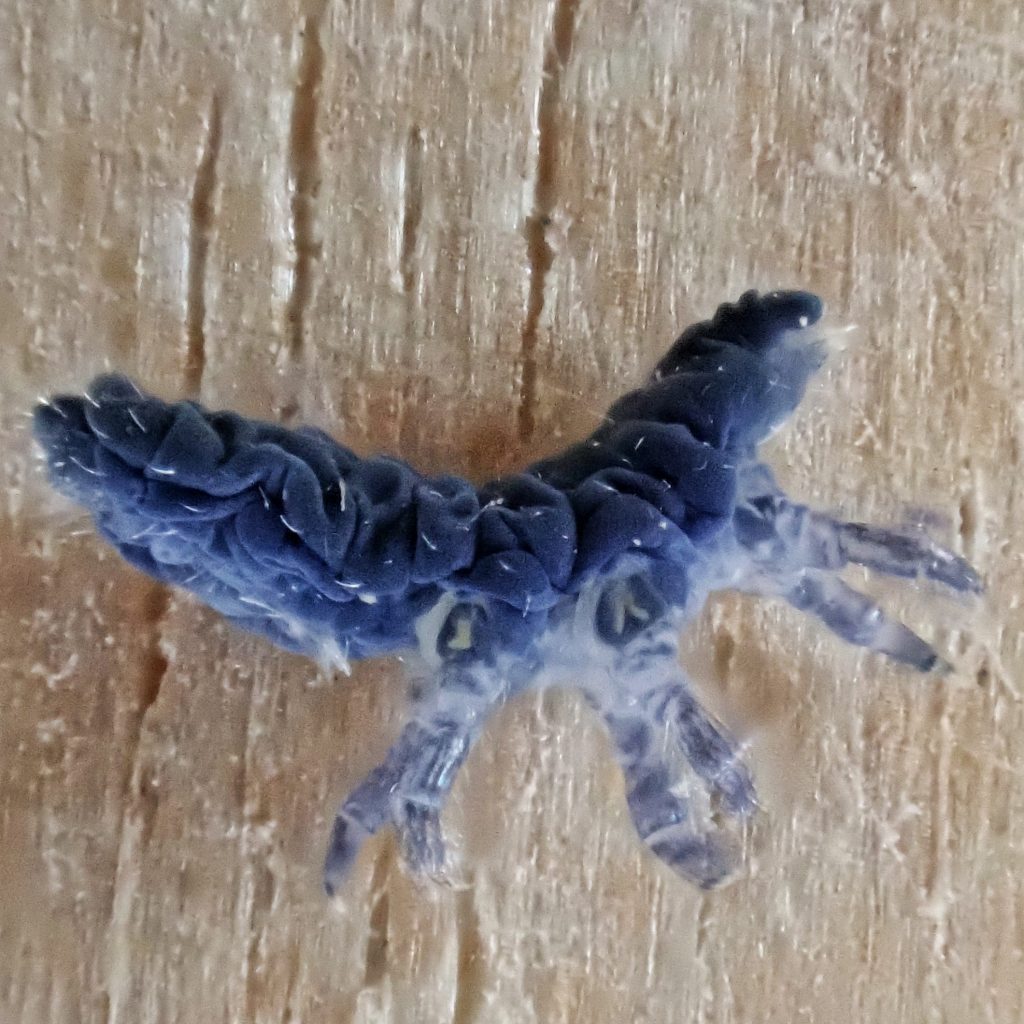
Like all springtails they are important to the health of the forest, both as decomposers and fungal controllers, and as a food source for various insectivores. Also like most Collembola they require at least 90% relative humidity in their environment to prevent desiccation, and they have the ability to manufacture glycines to prevent their hemolymph (bug blood) from freezing. For more general information on springtails, see my profile of Orchesella villosa
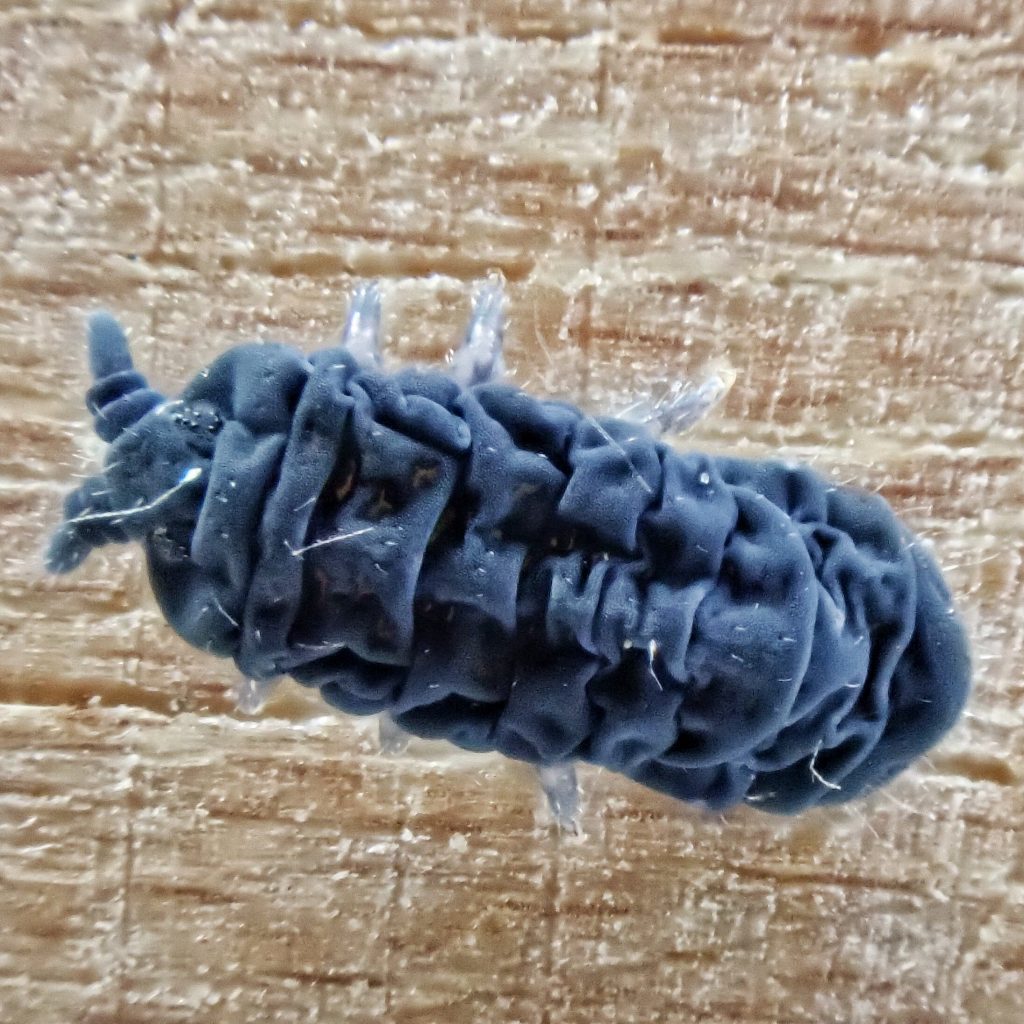
Description-Tiny (although at 2-3mm long it’s actually a medium sized springtail), with a blue to blue grey, elongated oval body; the element that convinced Frans that this was P. complexus was that the basal segment of the furcal arm (dens) was 1.5x as long as the apical segment (micro); antenna are slightly shorter than the head.
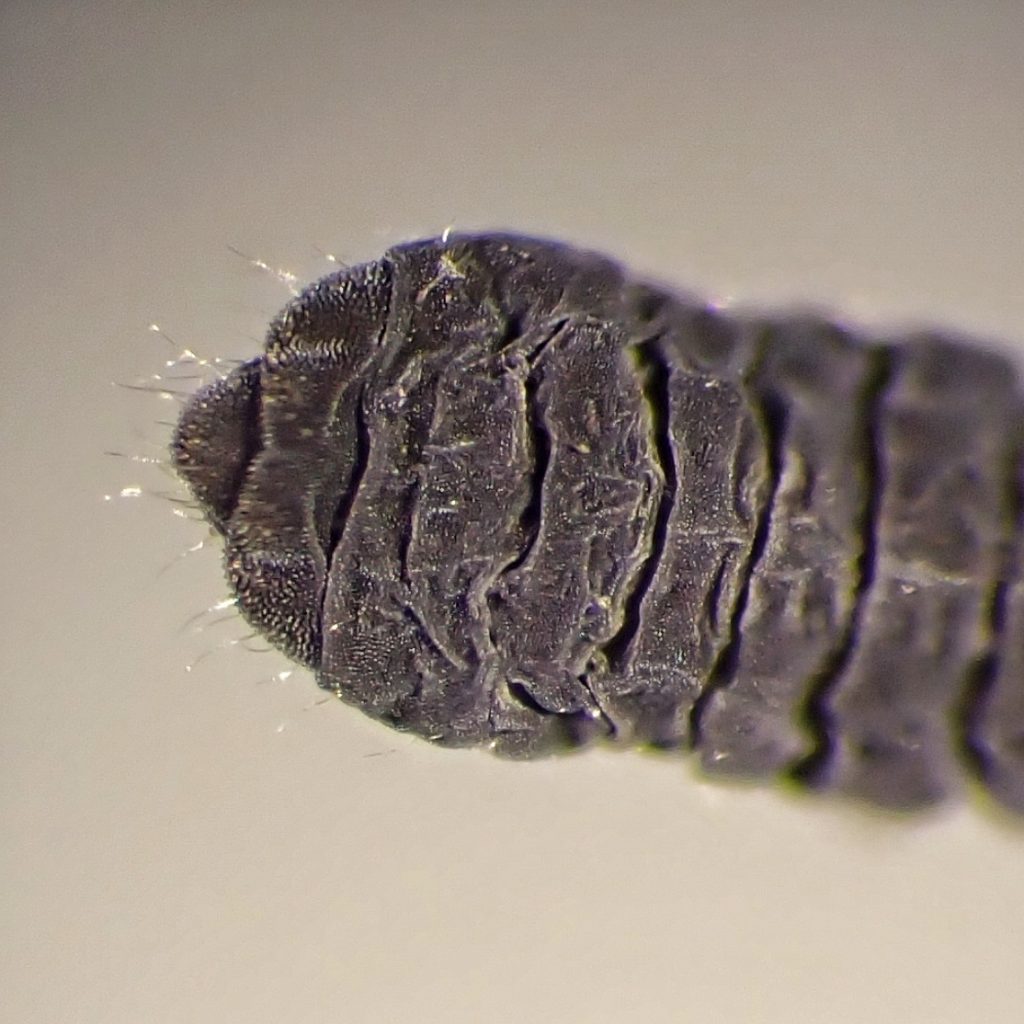
Similar species-Hypogastridae have anal spines dorsally on the last abdominal segment, although the ones in Hypogastrura nivicola are very small; all blue grey Poduromorpha require good magnification, a key, or expert attention, to differentiate or identify.
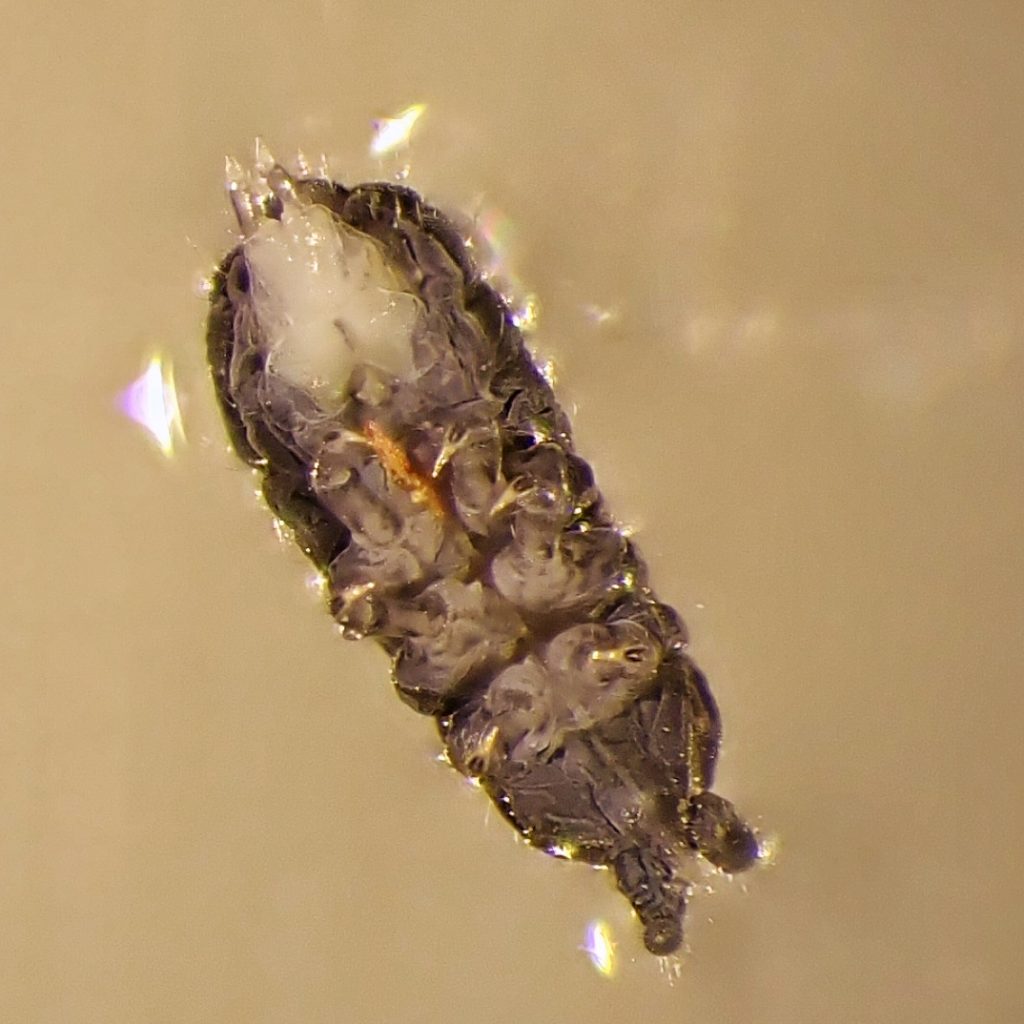
Habitat-I found these under the bark of a decaying alder snag, and many members of Neanuridae are known to live under bark, rather than in the soil; probably also found in woody debris in leaf litter.
Range-North America ; probably found region wide in appropriate habitat.
Eats– Probably fungal hyphae, spores, lichens, and possibly Myxogastria.
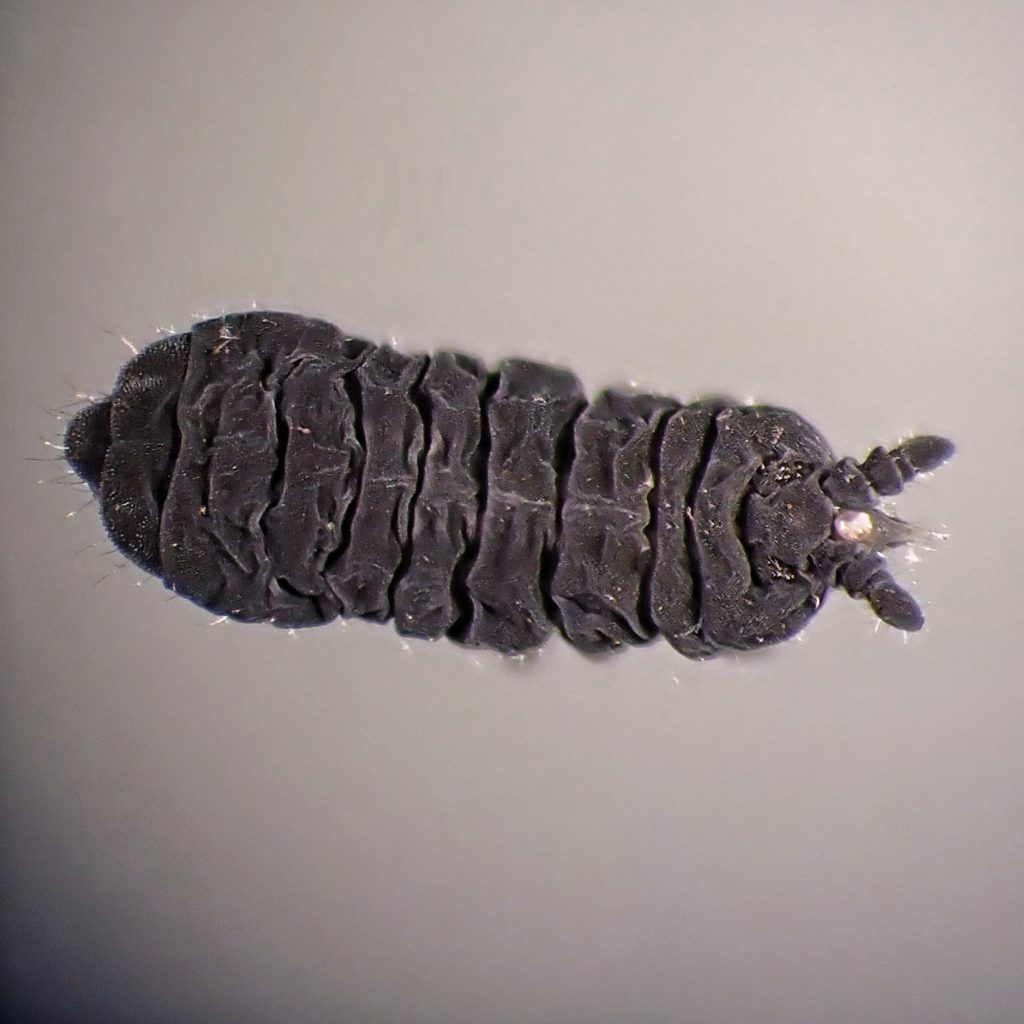
Eaten by-Most likely chorus frogs, salamanders, lizards, small gleaning birds like warblers, nuthatches, creepers, and kinglets, and larger ones like woodpeckers; spiders, harvestmen, pseudoscorpions, mites, beetles, damsel bugs; probably parasitized by some sphecid wasps.
Adults active-Possibly year around, although undoubtedly deep in cover during the coldest and driest times.
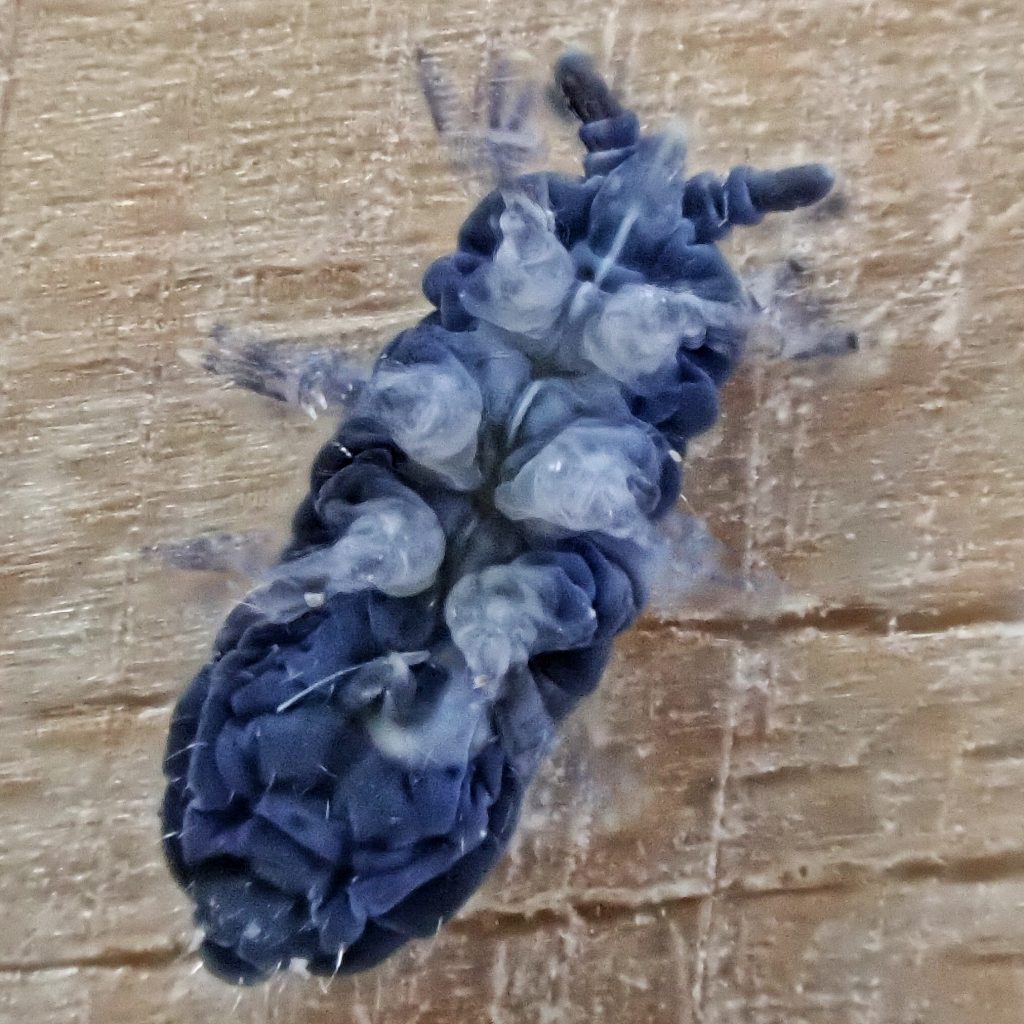
Life cycle-Probably something like- reproduction alternates between successive moults; male deposits a spermatophore on the substrate which a willing female will insert for fertilization; eggs are laid in clusters on the soil.
Etymology of names–Pseudachorutes may be from the Greek words for ‘false scurf/dandruff’, but like so much about this organism I cannot say for certain. The specific epithet complexus is from the Latin for ‘entwine’. What MacGillivray was referring to I cannot ascertain.
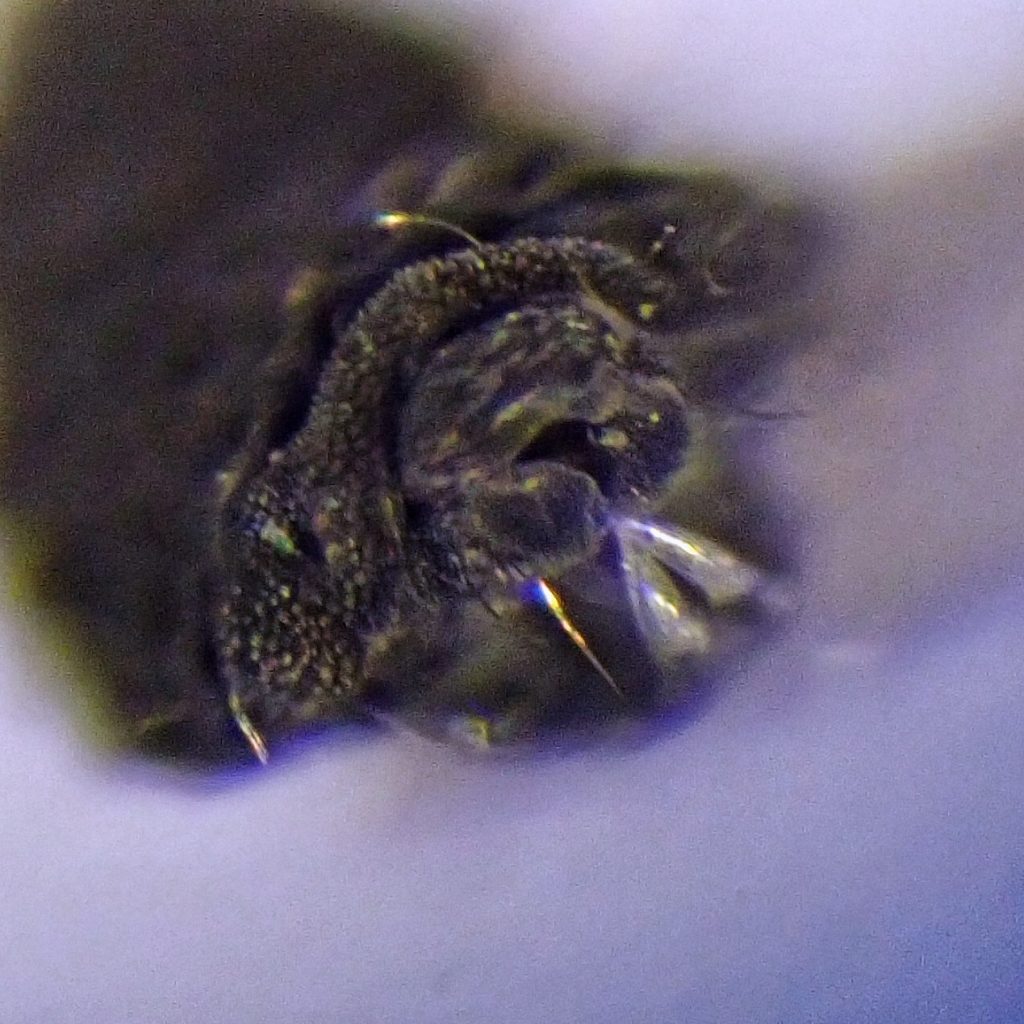
https://bugguide.net/node/view/2064066
Genus Pseudachorutes – BugGuide.Net
https://www.chaosofdelight.org/all-about-collembola-poduromorpha

1 thought on “Pseudachorutes complexus”